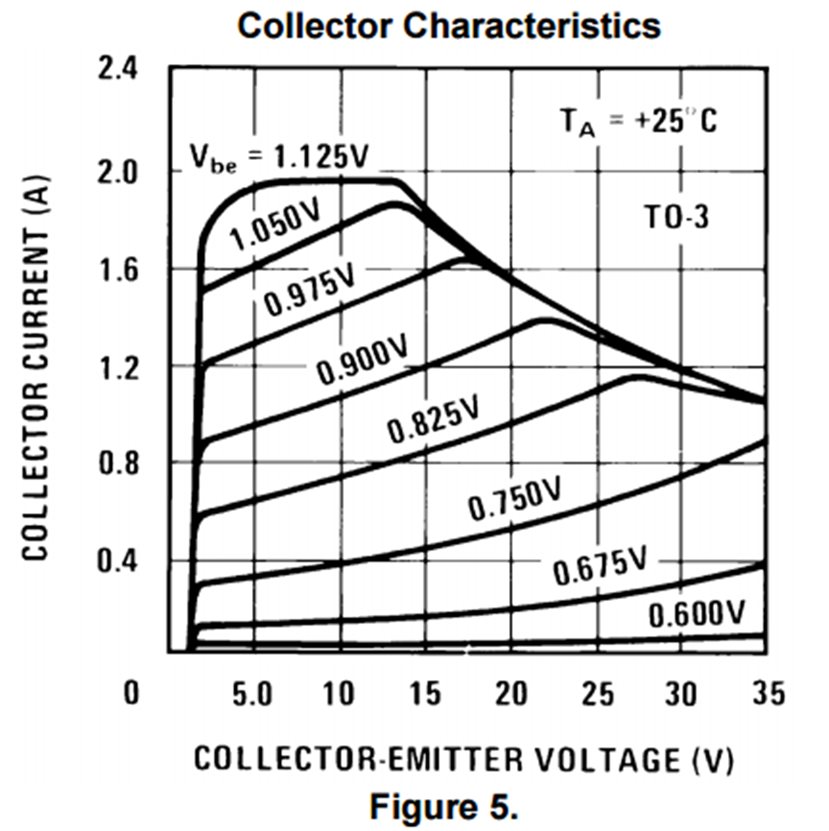Hi,
I am evaluating some LM395 TO-220 samples. I am using the device as described in the datasheet (www.ti.com/.../lm195.pdf) Figure 26 in conjunction with a CMOS logic output.
The LM395 has emitter to ground, open collector switching a LED + resistor. I am not able to get the device to fully turn on or off and need help.
I created a simple test breadboard where I used a pull down resistor (33k) from base to ground and switched the base to V+ (5V) to turn on. With Vbe @ 5V, the device should be in saturation. My Vce = 1.3V, which seems high. With the base pulled to ground, my Vce is 2.5V. I have tried this with V+ at 24V as well with similar results.
This circuit works fine with a 2N2222 NPN transistor. I have tried various combinations of base resistors and even pulling the base hard to ground without success.
Please advise what I'm missing!


